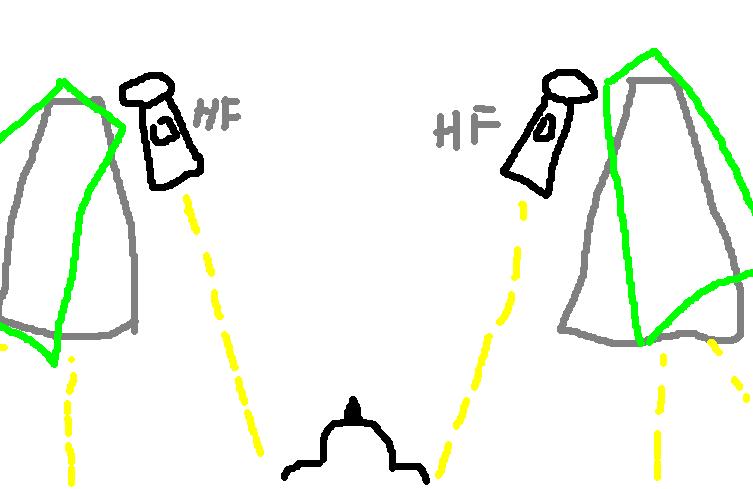Rerurn to Romy the Cat's Site
In the Forum: Horn-Loaded Speakers
In the Thread: Evaluation of tractrix curves based on visual surface reflections.
Post Subject: Re: 10 Footer : more..Posted by Romy the Cat on: 7/1/2006
 jessie.dazzle wrote: jessie.dazzle wrote: |
| Regarding cone movement versus rear chamber pressure : I understand that low excursion explains to a great extent, the advantages of horn-loaded designs, I just don't understand how something that "does not move", can generate such pressure... I realize that this is taking place within a constrained volume, but still... Can a bird fly without flapping its wings? |
|
Hm, what you worry, Jessie, the acoustic pressure or visible movement of the cone? If the driver generates a necessary acoustic pressure at given frequency then why you worry that it does not extend far geometrically? Many good high sensitivity drivers have hard sustention and do not shake like the contemporary shity drivers (look what Kaharm’s ceramic driver do – it is scare even to look at them). St Do not forget that all of those drivers were made to work WITH horns and they presume that the driver will have extra 6-9dB gain from the horn.
 jessie.dazzle wrote: jessie.dazzle wrote: |
| The inverted J solution may require aiming the mouth down a bit (again, just as your drawing shows), due to lack of distance between the horns and the listening position. |
|
Yes, I understand, Still do not forget that if you have 40hz-50Hz horn and if it does NOT go too high then it is fine to turn it outside a little

 jessie.dazzle wrote: jessie.dazzle wrote: |
| (BTW, have you tried aiming your Fundamentals Channel horn down towards your listening position?) |
|
Nope, I did not get my 250Hz yet, hopefully in a week.
 jessie.dazzle wrote: jessie.dazzle wrote: |
| The other option would be to take advantage of the high ceiling, and hang a pair of straight horns from the ceiling, aimed straight down at the listening postition... I have no idea what result such a set up might yield. |
|
Well, I do not think that there is such a thing as “aimed straight” at 50Hz. At 50Hz we do not aimed anything but rather load room with specific frequency. If you point your mid-bass channel “straight down” then the mouth of your horn will be way from the room boundaries and will be deep in the mid of the room. This might create two problems. Firsts, you might loose ~10-25Hz in response as the boundaries of your room will not “help” you. Second, if the source of your radiation in the mid of the room than you might have near-equal distances from the top and bottom boundaries. This would be a perfect recipe for the standing-waves.
The Cat
Rerurn to Romy the Cat's Site